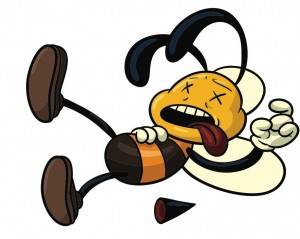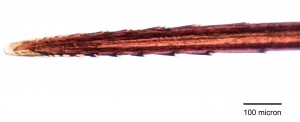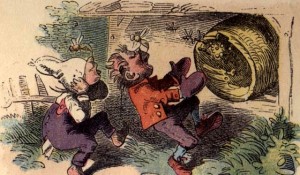Bee Sting: keeping safe near bees
Why bees sting
Bees are not plotting to kill you. Honey bees don’t go around attacking for no reason, because they will die shortly after stinging humans. Their stings are defensive and designed to be a painful warning rather than a lethal injection. Bee stings have tiny barbs that get stuck in our skin and the bee ‘bleeds’ to death.
Photo of bee sting by Richard Toft. (A micron= a millionth of a metre). Click to enlarge:
Bee safety tips:
- Don’t disturb bees. They usually sting when threatened or defending their hive – so avoid hives/nests. Honey bees don’t normally sting when on flowers.
- If a honey bee lands on you, do not panic and do not slap it.
- If you do get stung, remove the stinger by gently scraping it sideways, maybe with your finger nail. Don’t pinch the stinger. Move away from the area – a sting releases a scent that attracts other bees – or cover up the bit that’s been stung.
- Move slowly around bees; don’t run and wave your arms.
- Read more about reducing the likelihood of stings — download pdf.
Let the bee be, and the bee will let you be.
Important – Please Read: People who are allergic to bee stings have to be very careful not to get stung. Bees are wild creatures; they’re not like pets or farm animals. This information about bee stings is not intended to be comprehensive or to provide medical advice. No responsibility or liability is accepted for any actions taken in reliance on it.
The Science of Bee Stings
When bees inject venom into humans it makes our cells release molecules called histamine which cause swelling in the area. Blood vessels widen to allow more blood to flow in (so the area becomes swollen and red). The histamine sends a ‘danger’ signal to the brain and we feel a sharp pain.
Picture: Naughty boys disturbing a beehive – from The Little Honey Thieves, by Wilhelm Busch, one of the first ever comic books (1859).
What’s more dangerous than being with a fool?
Fooling with a bee!


